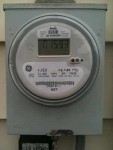- Share on Facebook
- Like
- Digg
- Tumblr
- VKontakte
- Buffer
- Love This
- Odnoklassniki
- Meneame
- Blogger
- Amazon
- Yahoo Mail
- Gmail
- AOL
- Newsvine
- HackerNews
- Evernote
- MySpace
- Mail.ru
- Viadeo
- Line
- Comments
- SMS
- Viber
- Telegram
- Subscribe
- Skype
- Facebook Messenger
- Kakao
- LiveJournal
- Yammer
- Edgar
- Fintel
- Mix
- Instapaper
- Copy Link
- Bluesky
The DEP has proposed a rule change that would restore “Category A” protection for the Kanawha River. If the rule change is approved, West Virginia American Water would have the option of placing a second intake on the Kanawha near WVAW’s Charleston treatment plant.
The rule has been introduced as S.B.167, which has been referenced to the Senate Natural Resources and Judiciary Committees, and H.B. 2289, which first goes to the Industry and Labor Committee and then Judiciary.
Only streams that are classified as Category A are allowed to be used as public drinking water supplies. Since 1967, West Virginia’s water quality standards have applied an equivalent Category A protection to all waters, with only a few exceptions. But the Category A protection for the stretch of the Kanawha River from Belle downstream was removed in the early 1980s, which meant that part of the Kanawha could not be used as a drinking water source.
Certain industry groups oppose the state’s long-standing policy of protecting most waters for current and future drinking water use. They propose not only to reject upgrading the Kanawha to drinking water status, but also to limit Category A protections for all streams to just 500 yards above existing drinking water intakes. The Coal Association’s “Legislative Program 2015” states that “We should be prepared to encourage a legislative discussion on this issue and prepare the legislature to finally clarify that not all state waters are public water supplies.”
And you may remember that during the December interim session, Delegate Justin Marcum proposed eliminating the statewide application of Category A; and it almost passed! You can read about that here.
Removal of Category A protection would be the most drastic weakening of statewide drinking water protections since West Virginia established its water quality standards in the 1960s. Such an action would result in an increase in pollution in nearly all our rivers and streams. It ignores potential future use of waters as drinking water sources, and limits our options for finding water that’s safe for drinking. Costs may be cut for a few industries, but more polluted water poses increased costs and concerns for other businesses and for citizens who live in or might locate to West Virginia.
Further, in an op-ed in Sunday’s Gazette-Mail, WVAW President Jeff McIntyre reveals that the cost to WVAW of placing an intake on the Kanawha at Chelyan would be $100 million more than that of placing the intake in Charleston. Additional discharge treatment costs that would be incurred by industries on that stretch of the Kanawha would be minimal by comparison. And no doubt the $100 million would be passed on to WVAW’s customers–an “externalization” of the costs of those industries’ pollution.
How you can help. For now, contact members of the Senate Natural Resources Committee and the House Industry and Labor Committee and tell them to 1) support restoration of Category A status to the Kanawha, and 2) oppose the elimination of statewide application of Category A. Contact information for those committee members can be found here (Senate NR) and here (House I&L).
Angie Rosser contributed to this article.






